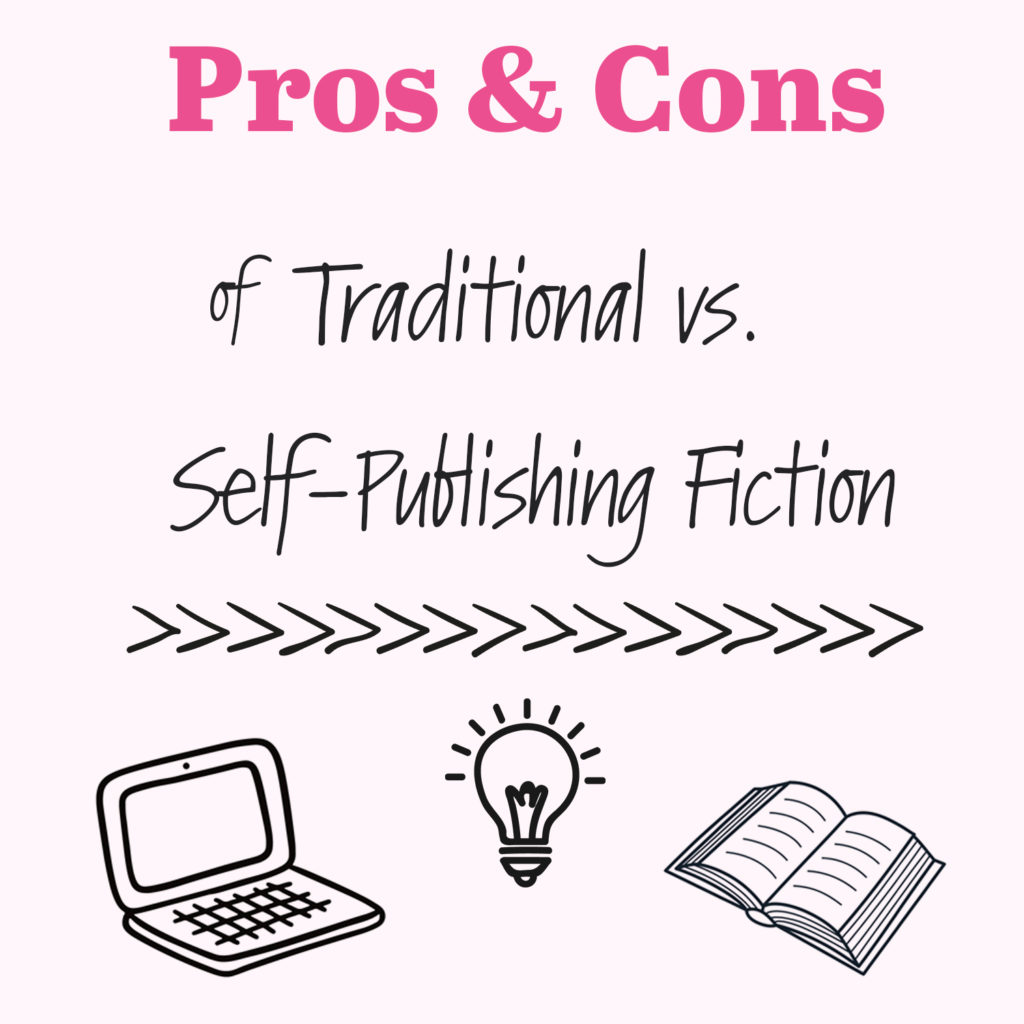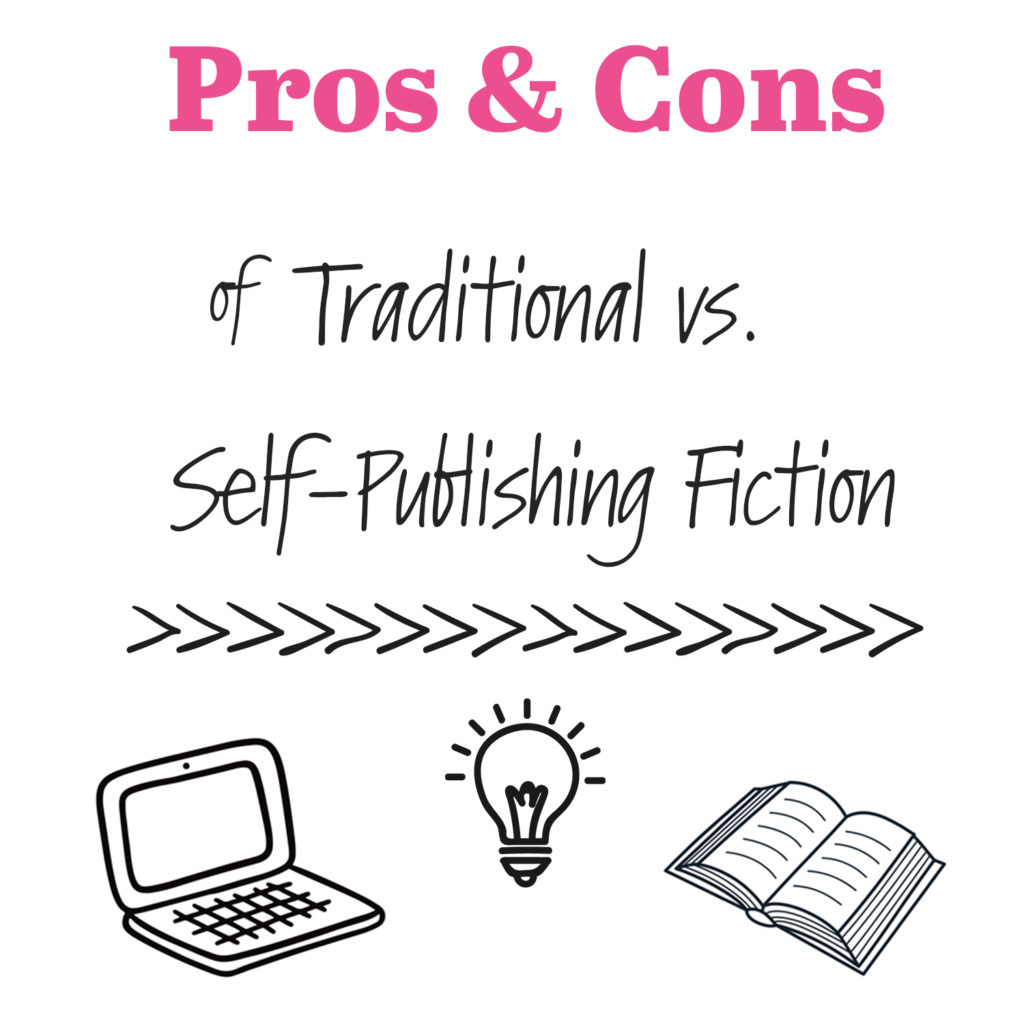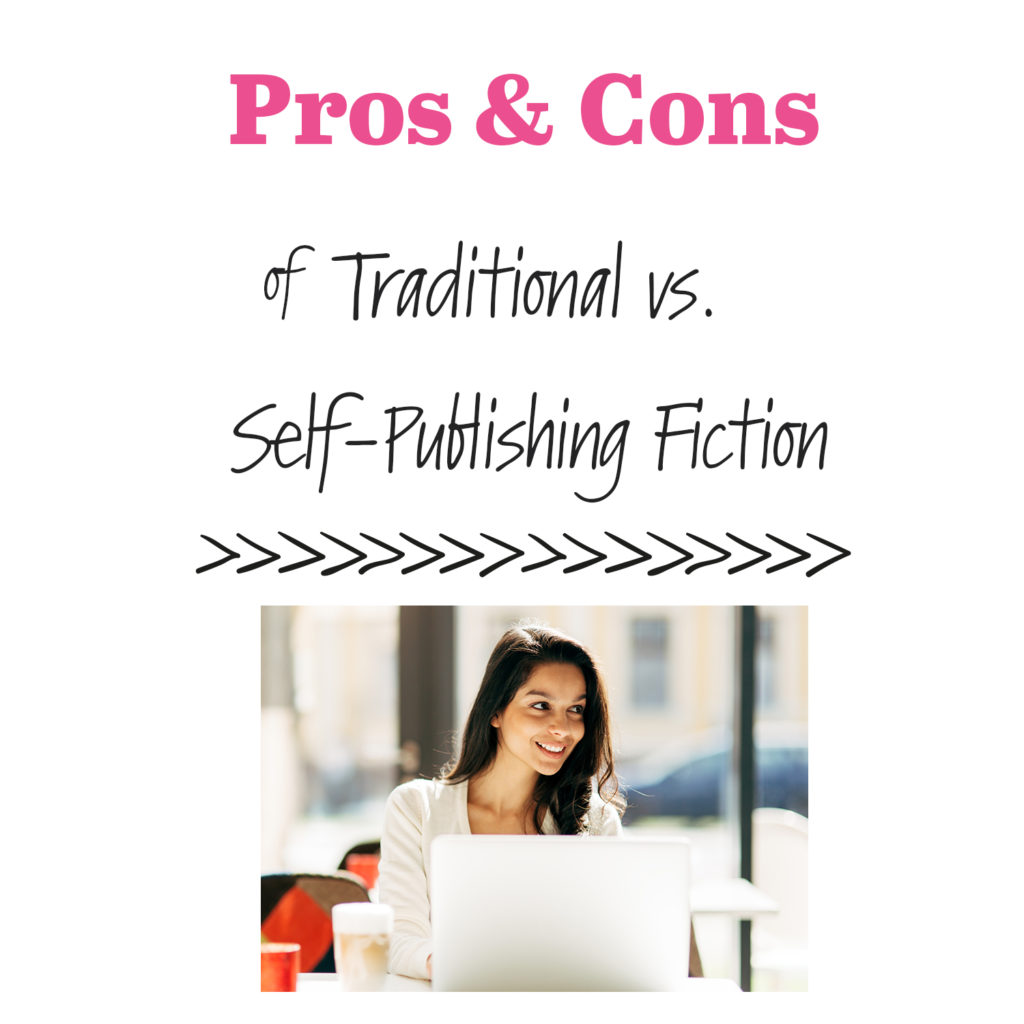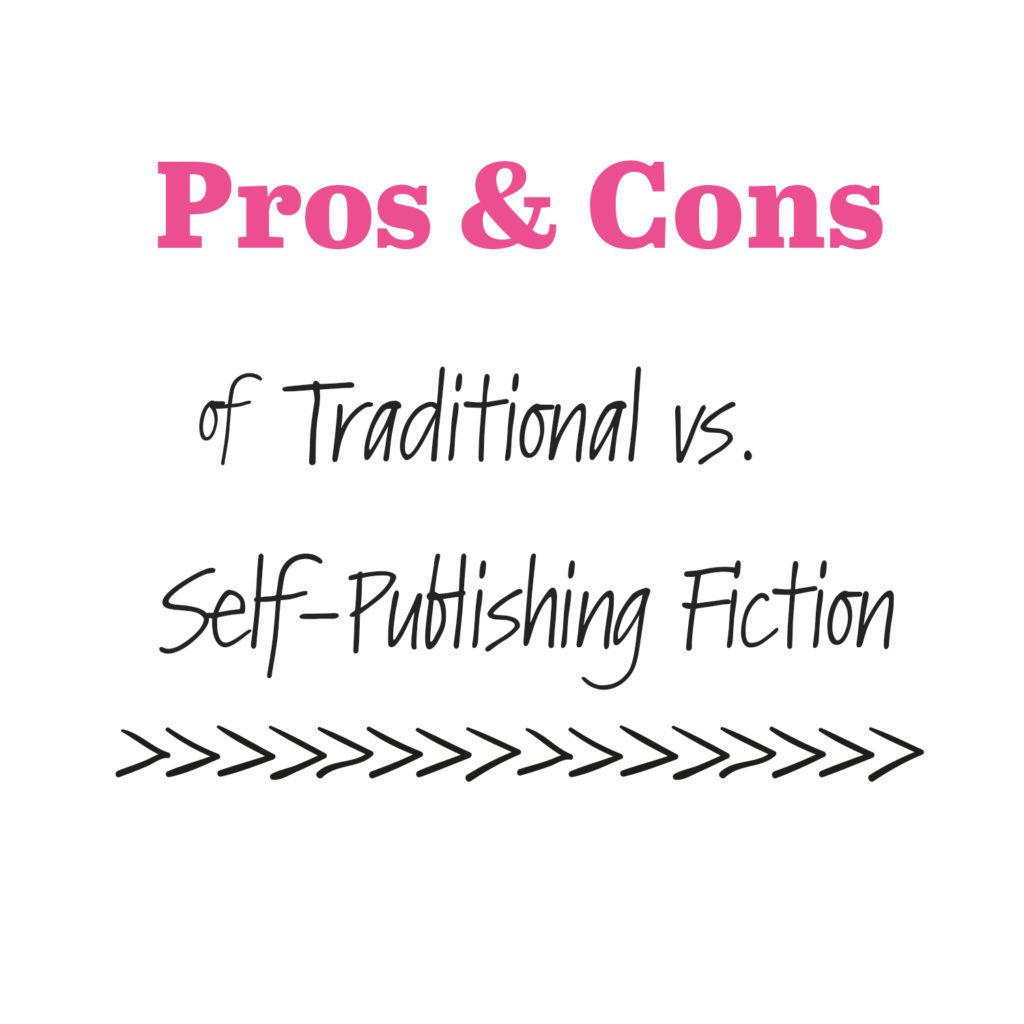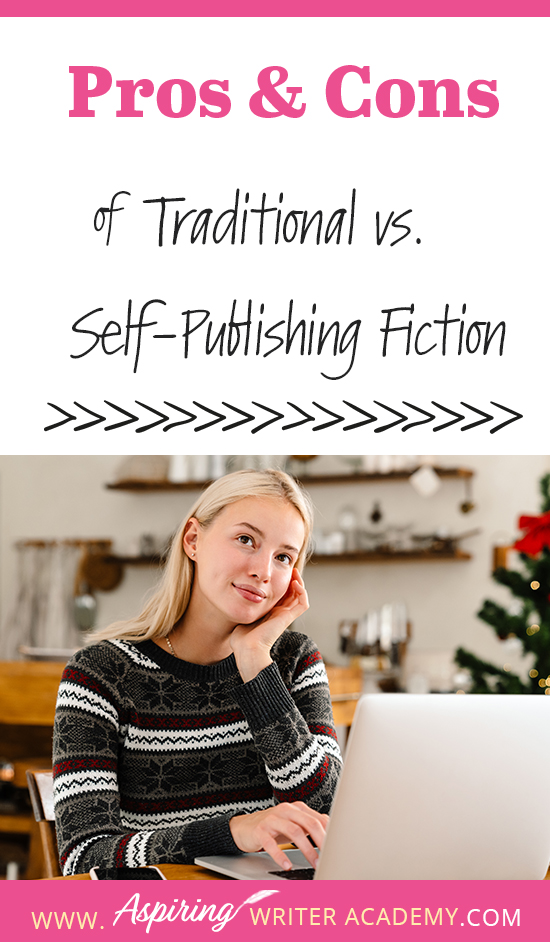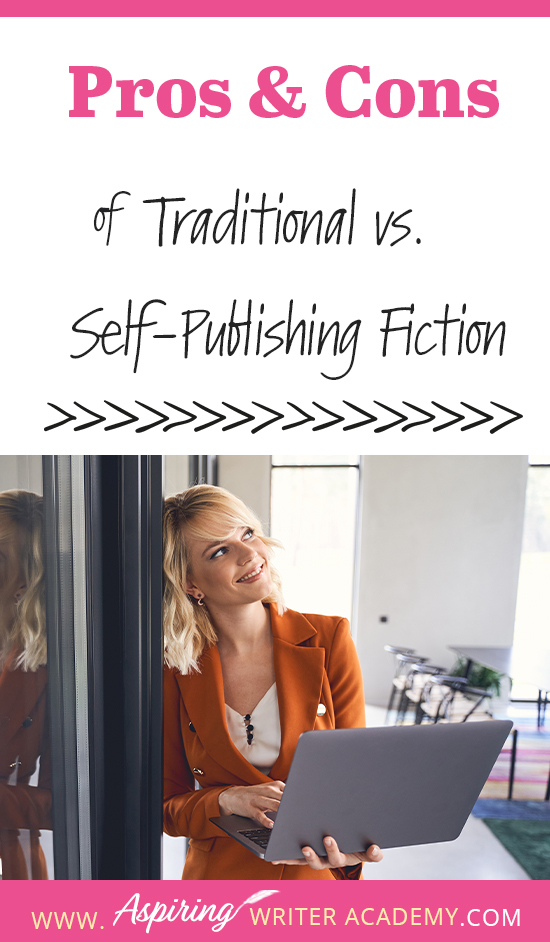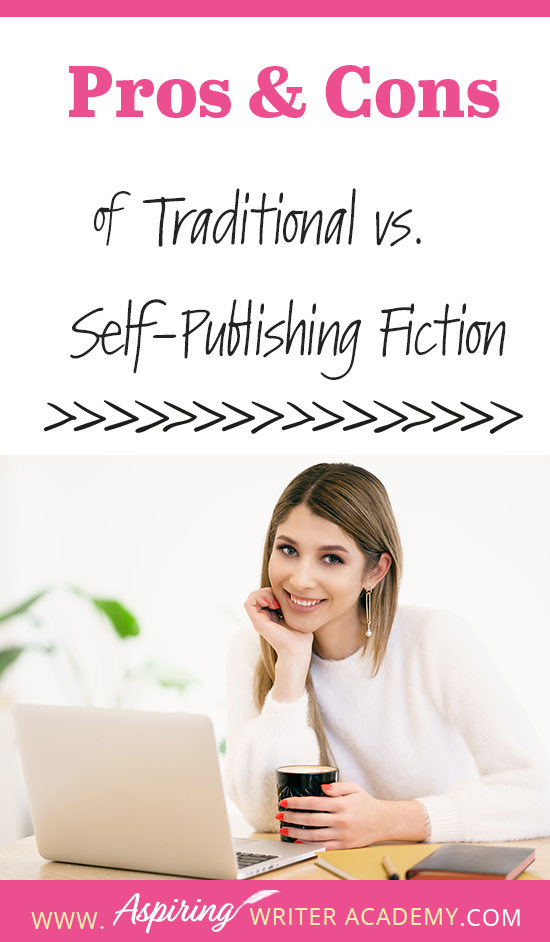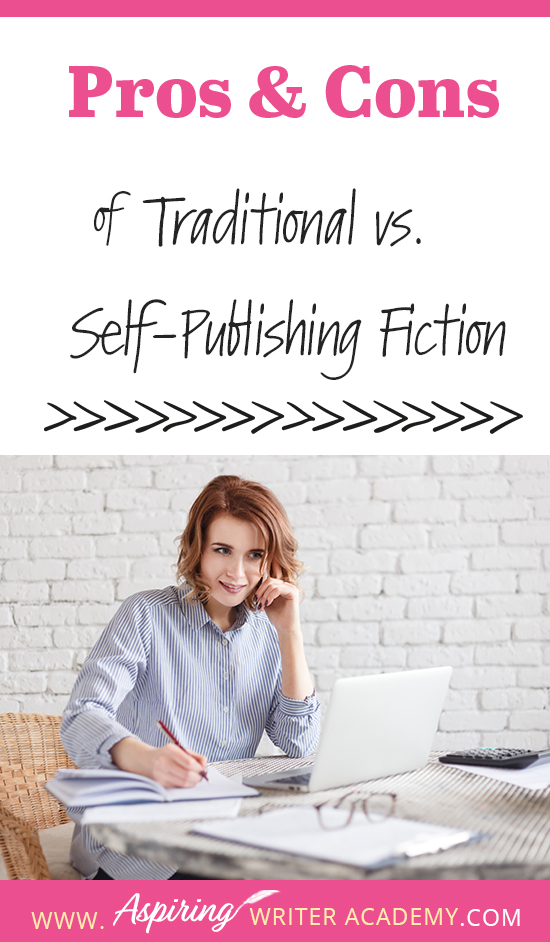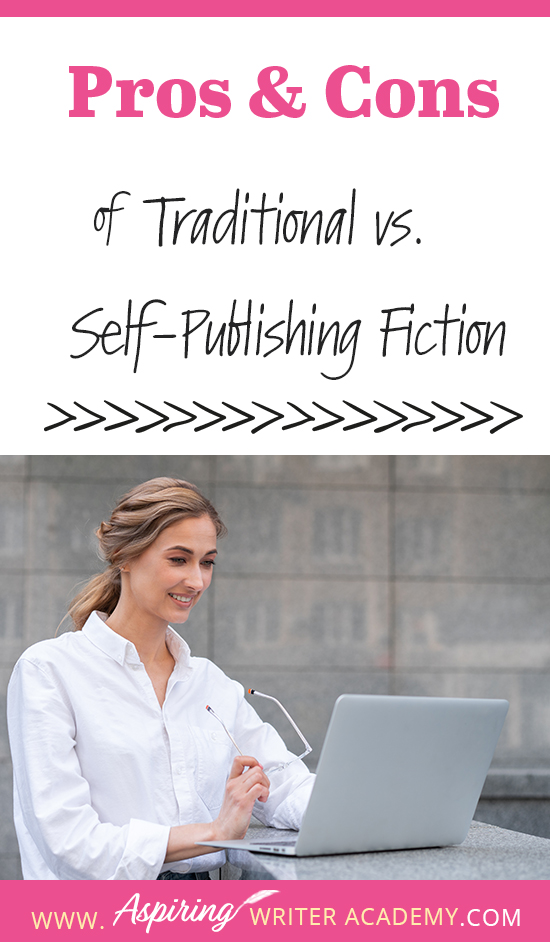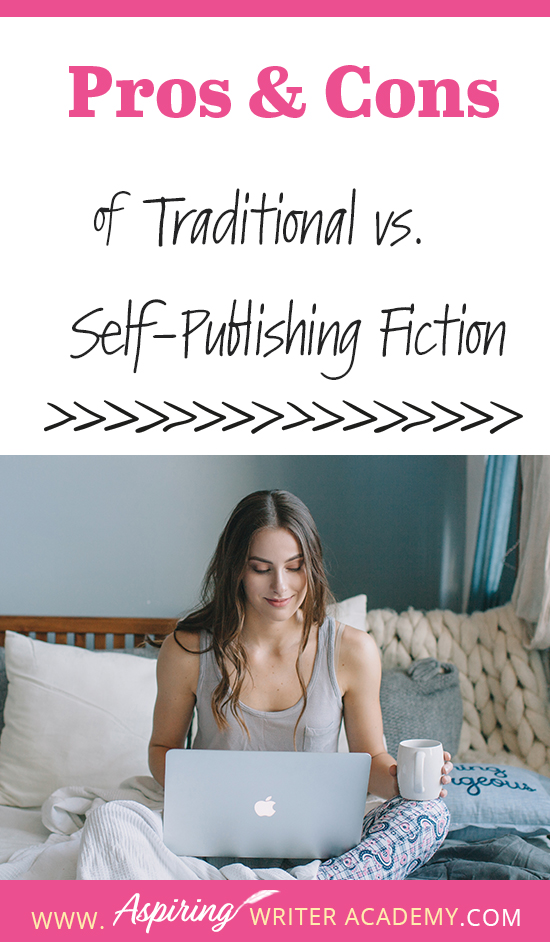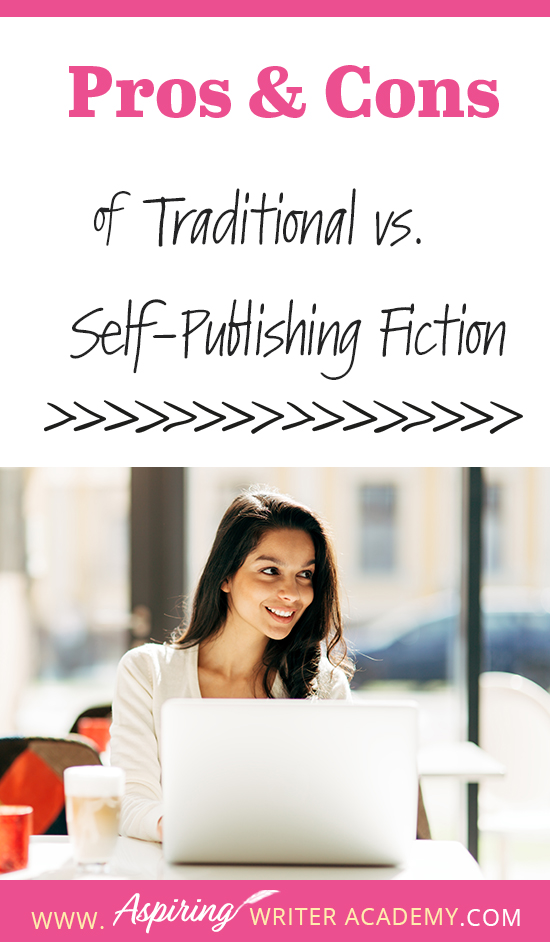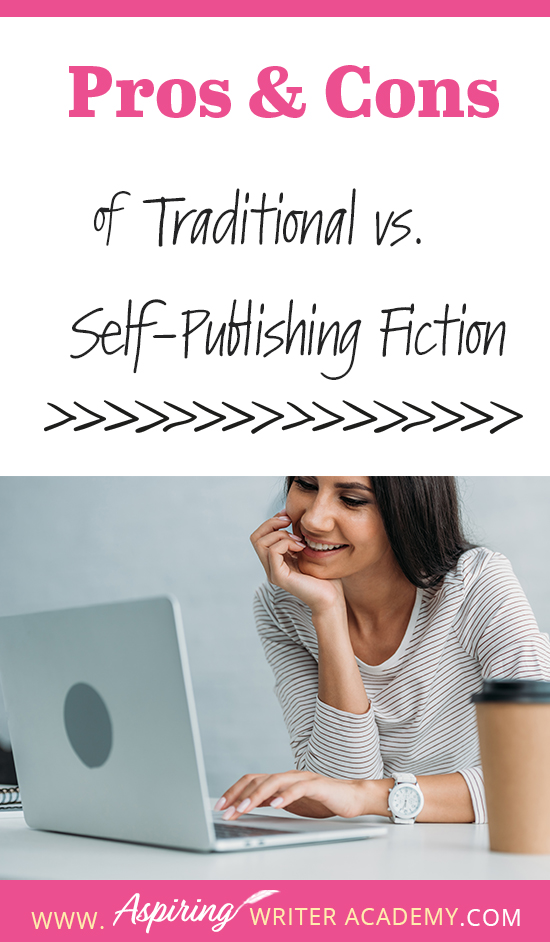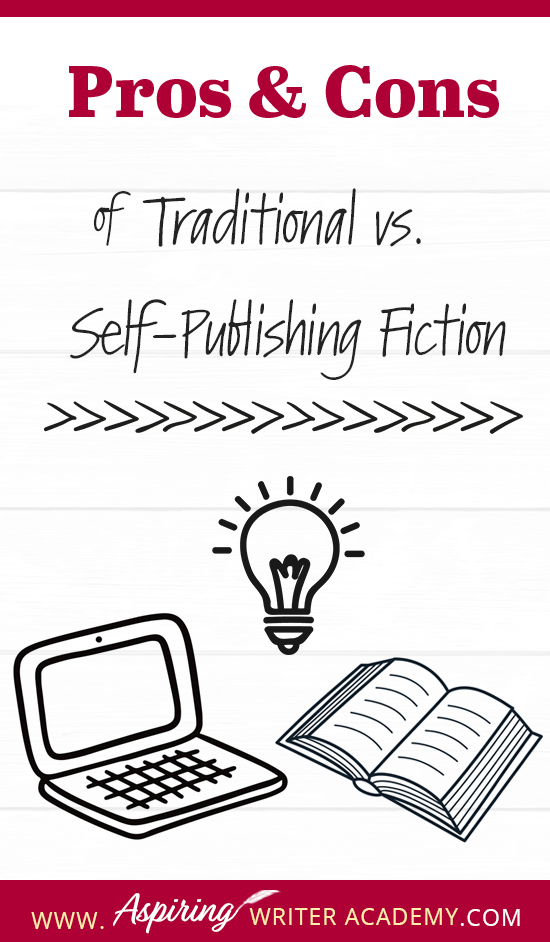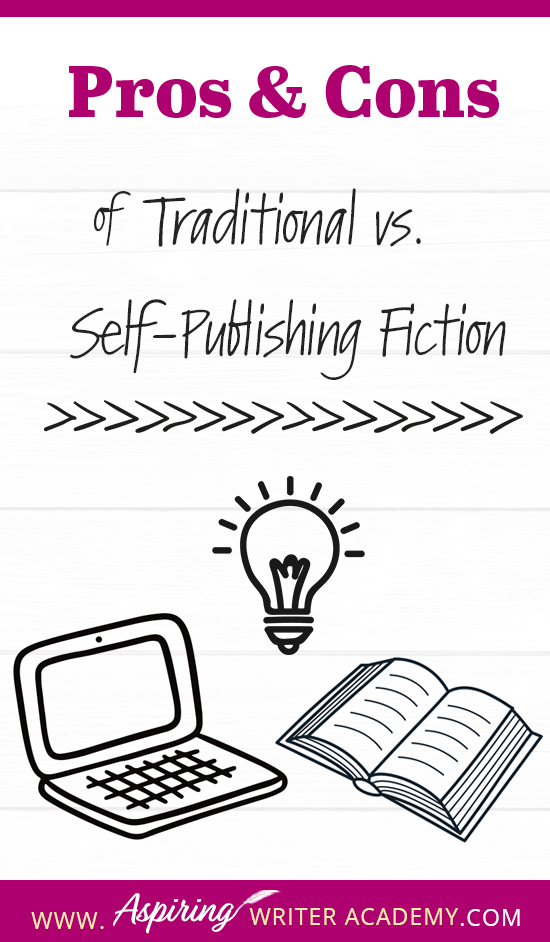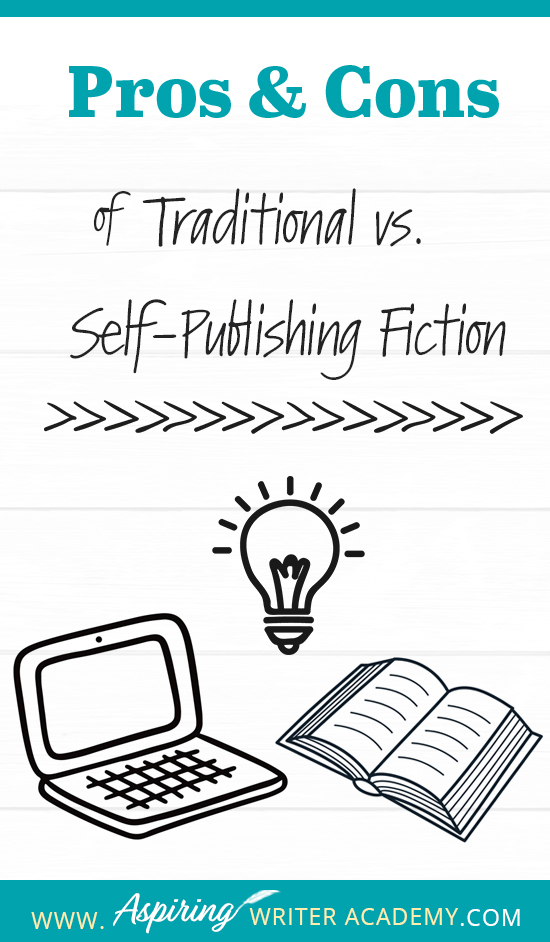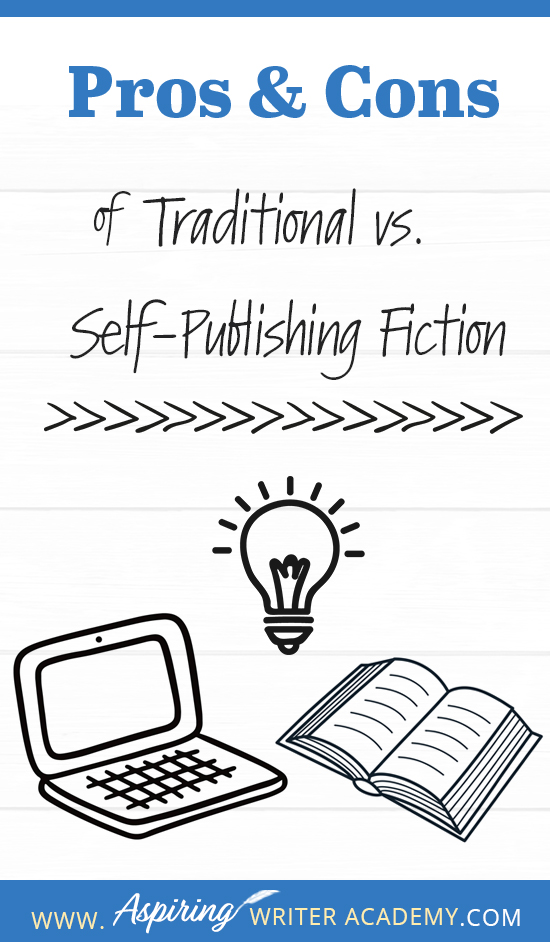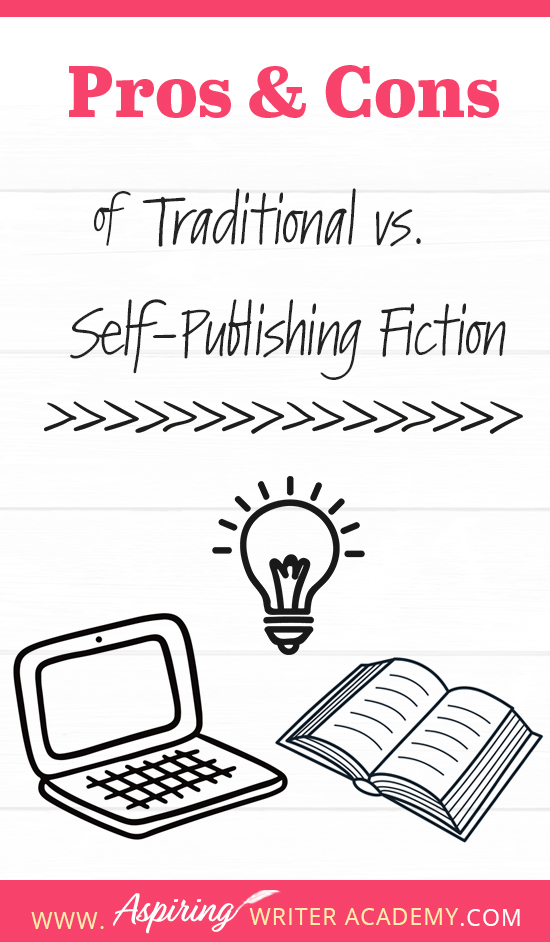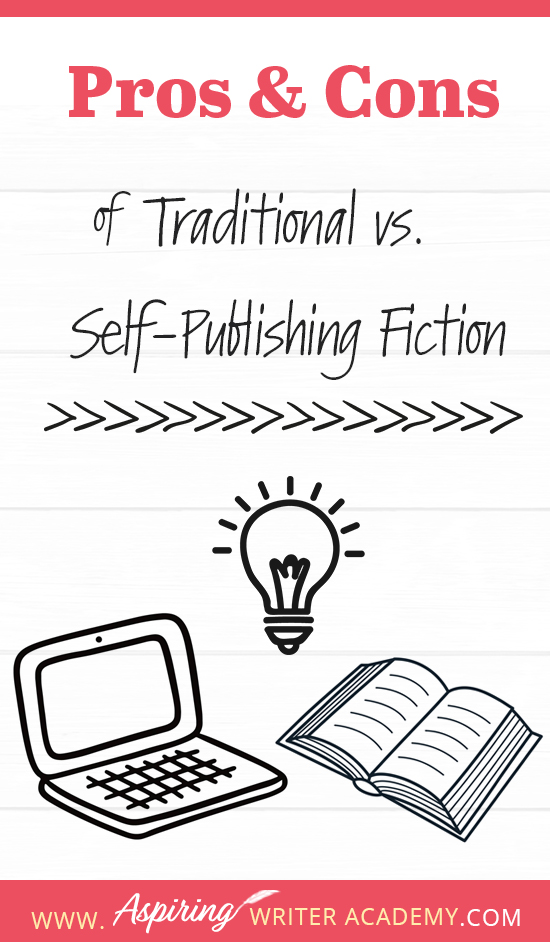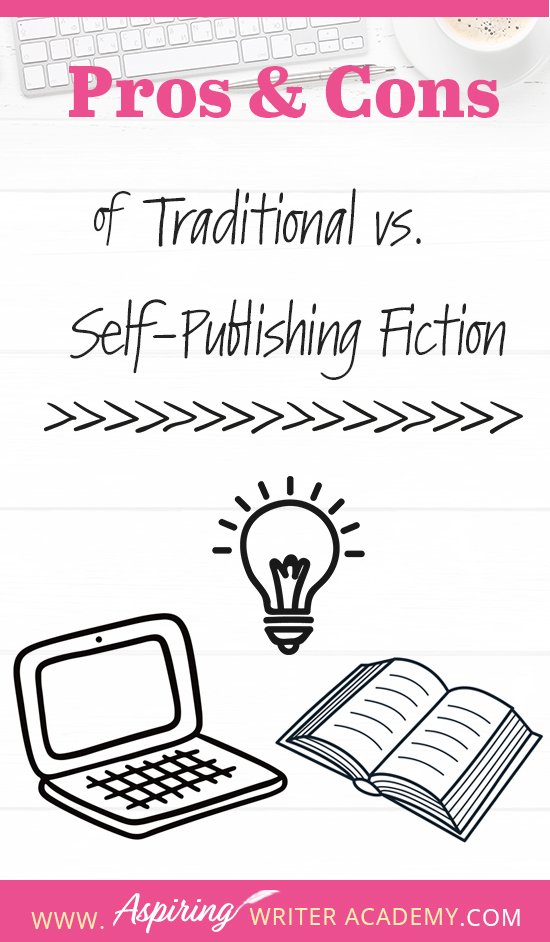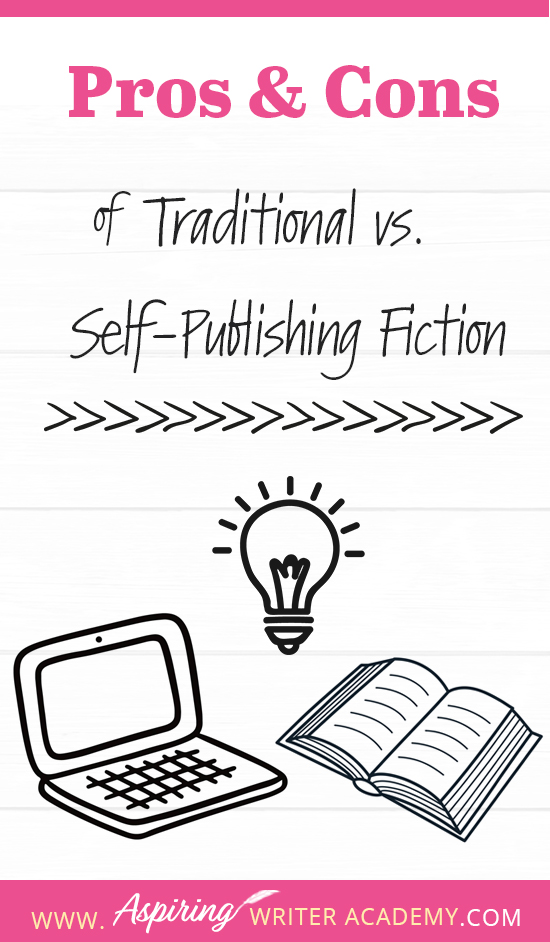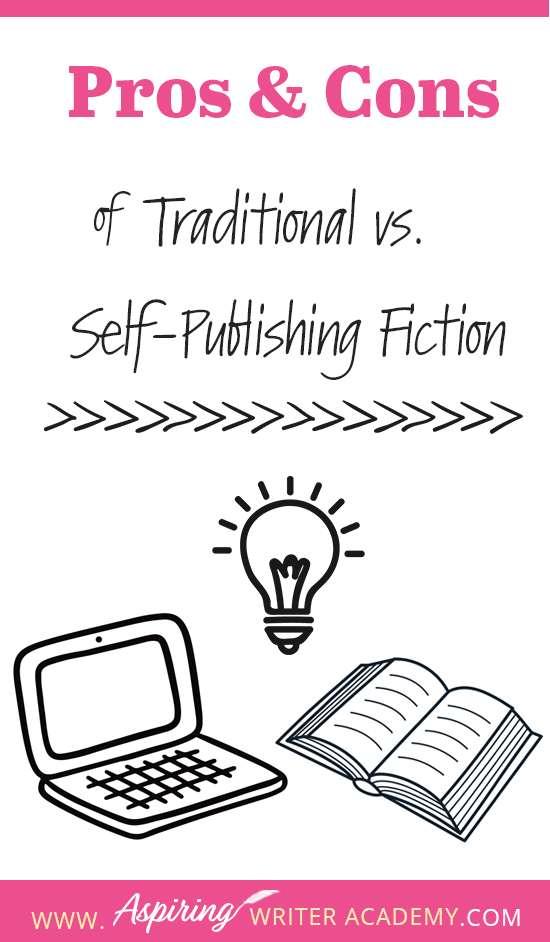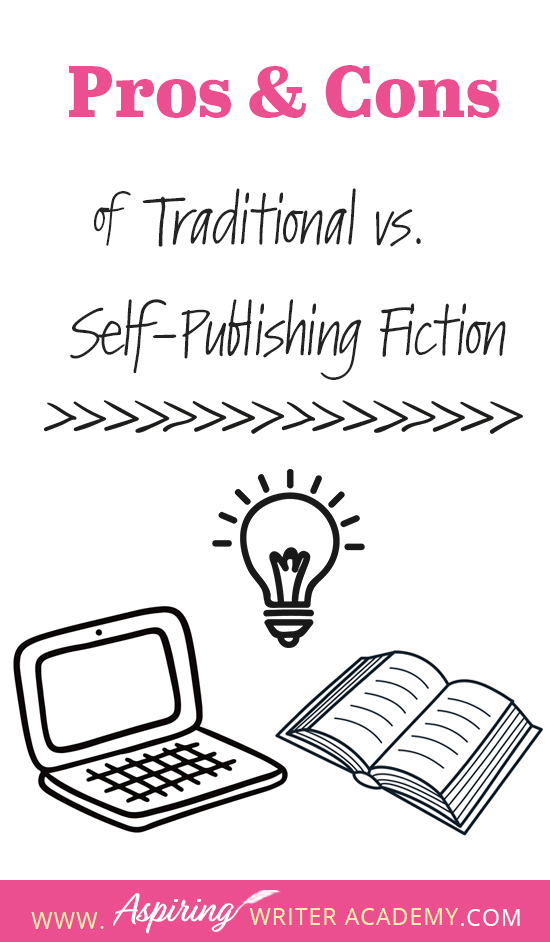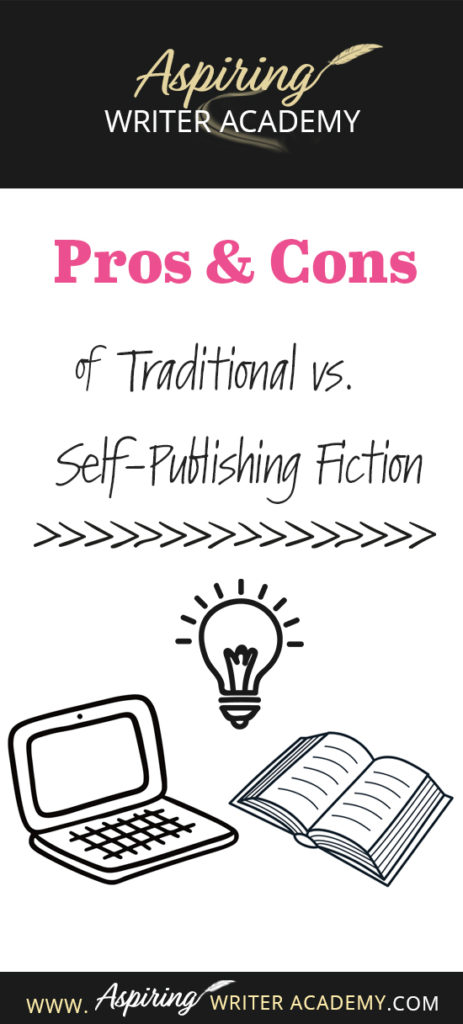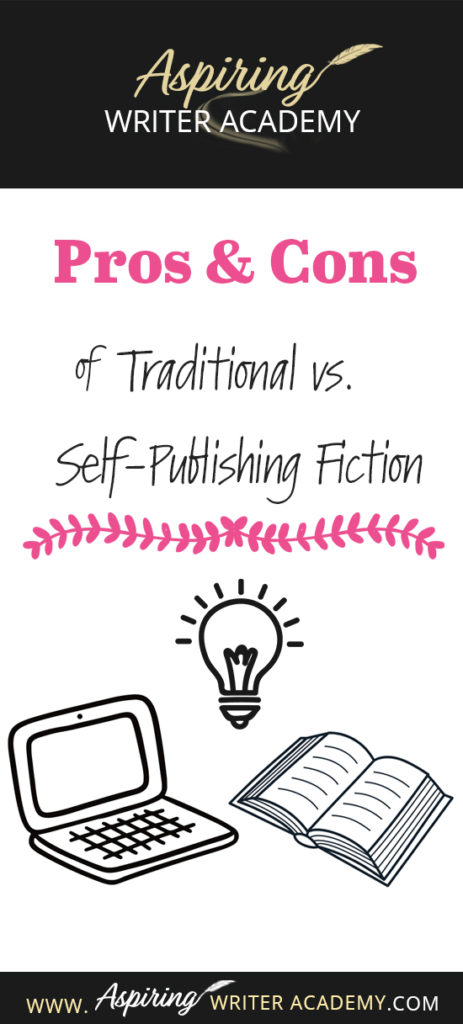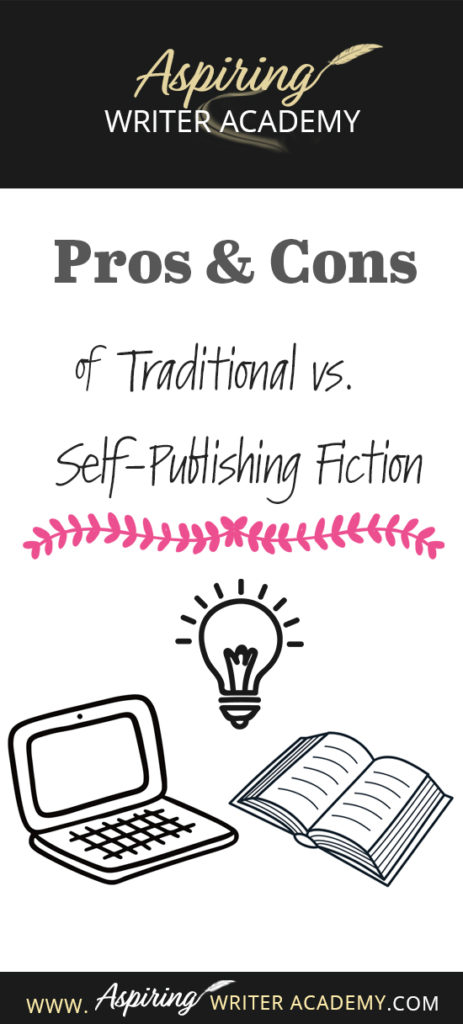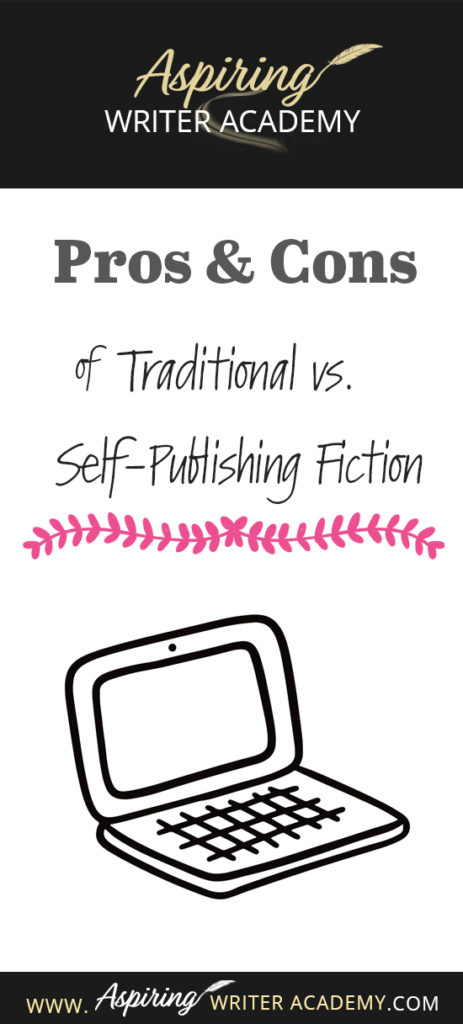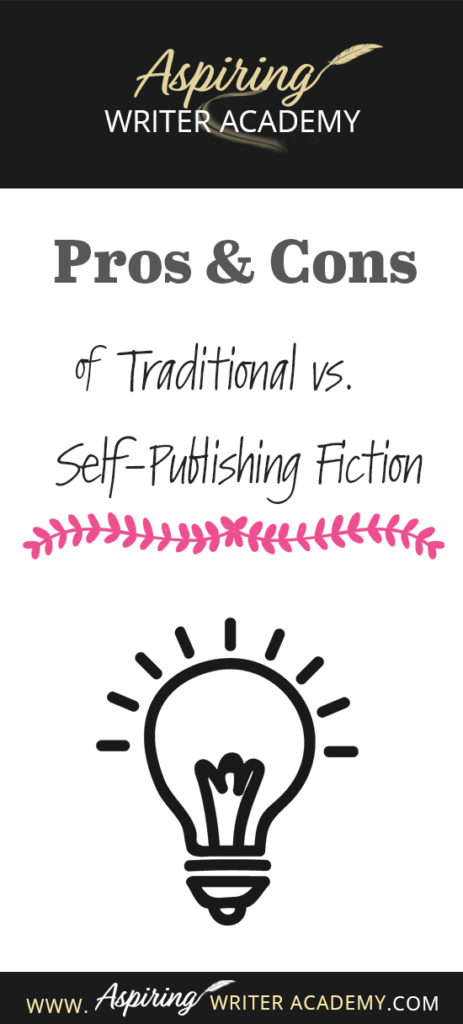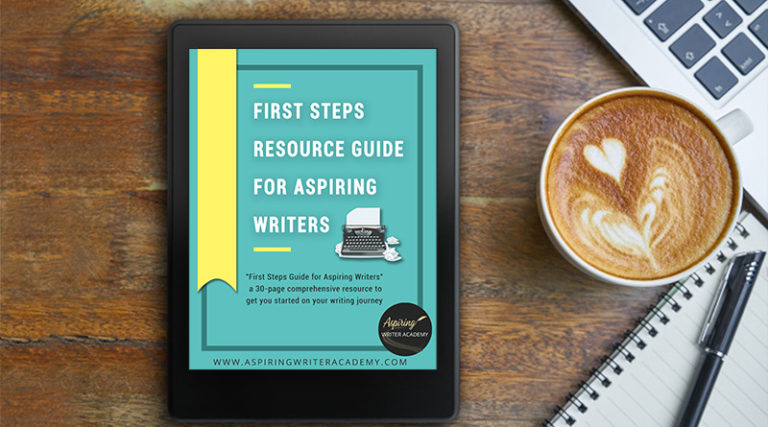Pros & Cons of Traditional vs. Self-Publishing Fiction
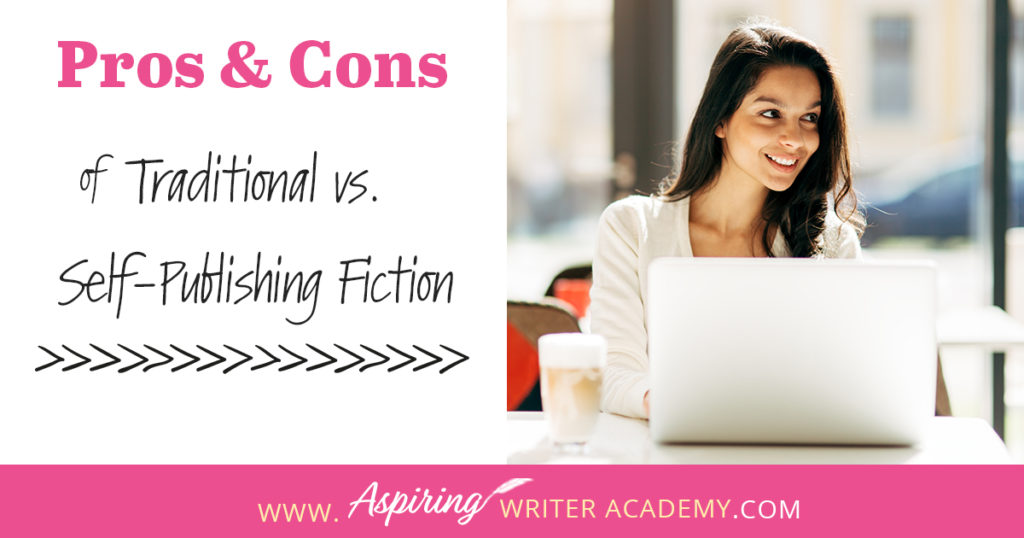
If you are an aspiring writer, you may be wondering whether you should self-publish or try to have your book published by a traditional publisher. What are the benefits? The cost? How hard is it to do? Do you need an agent? How much time is involved? What resources do you need or what skills do you need to know? In our post, Pros and Cons of Self-Publishing Fiction, we give you some of the advantages and disadvantages to help you decide which path is right for you.
In the post below we will discuss:
- Basic differences between traditional and self-publishing
- What is a ‘hybrid?’
- The differences in cost and potential earnings
- Who else should be on your “team”
- Promotion, scheduling, and the value of control
- Resources, skill sets, and the investment of time
Basic differences between traditional and self-publishing

- Time:
Most traditional publishing houses only accept agented submissions, which means you need to sign with an agent before you can submit your work. Finding an agent who will agree to represent your work may take months, sometimes even years—especially if the quality of your work isn’t up to par with industry standards.
*Note: Taking the time to learn the craft of fiction writing is essential whether you decide to go with a traditional publisher or self-publish. Publishing your work before it is ready will only lead to bad reviews and poor sales.
Once an agent sends your work to the various publishing houses, it may take up to 6 months or longer to hear whether a publisher plans to issue a contract or not. Years can be spent in this cycle, where you are submitting and submitting and not publishing a thing. Your work may be wonderful; however, traditional publishers can only publish a certain number of books per year, and they may already have a full schedule. Or perhaps they recently contracted another book similar to yours and they need more variety.
Assuming your work is of excellent quality, one of the pros of self-publishing is that it can save a lot of time. If you decide to self-publish, you set your own deadlines and publication date. You do not need an agent or need to wait to hear from a publisher. The actual process of self-publishing can also be done quickly. Most self-published books can be uploaded and ready to sell in 24 hours.

- Money:
Traditional publishing is easier for authors who do not have a lot of up-front cash. Once a book is accepted and issued a contract, the publisher pays for the cover art, editing, formatting, copyrights, ISBN #’s, and perhaps some promotional graphics. They may even pay for the book to be part of a blog tour. Traditional publishers may pay their authors a large advance as soon as the contract is signed—great news for the author!
One of the cons of self-publishing is that the author is responsible to pay for all the above items before the book is published and makes a single sale. If you are looking to build a career, you must treat book publishing as a business, and all businesses have start-up and operating costs. Paying for a high-quality book cover and professional editing is essential to your success as an author.
- Note: one of the biggest mistakes a new author can make is to think they can just write a book, self-publish it for free, and make a lot of money.
If an author can’t afford to hire a graphic designer to create a good book cover, or pay for high-quality editing, or pay for the other expenses involved, then there is a good chance the book will not sell many copies.
Before deciding to self-publish, count the costs.
If you do not know how to format and upload your book to Amazon or the other online retailers, then you will need to hire someone to do this for you. You will also have to pay for your own promotional items like bookmarks, banners, blog tours, and online ads.
Even though you may have the skill set to create some of these things on your own, you must also once again consider your time. Is it worth your time creating promotion when you could be writing your next book, or is it better to pay someone else to do this job for you? Where is your time and money best spent?
Set aside money to invest in yourself and learn the craft of fiction writing through how-to books, writing classes, and conferences. Invest in your business by hiring the right professionals to help make your books the best they can be.
However, for the professional, business-savvy author who chooses to self-publish and do the necessary work to promote their books, there is the potential to earn higher royalties for each book sold than those who are traditionally published.
This is why many authors choose to be what is called a ‘hybrid.’ They will publish some books with a traditional publisher to gain name recognition with a wider audience, and they will self-publish other books to gain the higher royalty percentage offered by Amazon and other online retailers so they can make more money.

- Control:
When a traditional publisher offers a contract to publish your book, they retain the rights to that book and control when it is published, the price, the format, book cover design, and where the book is promoted. All authors are responsible for their own book promotion, but sometimes a traditional publisher can get your book promoted on platforms only they can access.
The publisher may want to change your book title. The publisher can also choose to run a sale on your book or choose to publish it in different languages for foreign markets or to offer it as an audio book. The publisher makes most of the decisions for your book.
When an author chooses to self-publish, the author has all the control. This can be good or bad, depending on your level of experience. For some just starting out, this can be overwhelming. For those who have been in the business awhile, self-publishing offers a good amount of freedom.
The author can make their own choices regarding publication dates, price, format, and promotion. The author can choose their own book cover, instead of accepting one they might not particularly like. They can choose their own audio book narrator if they decide to go that route, instead of accepting what is given them. The author can write their own back cover copy and choose their own titles. The author also chooses their own writing, publishing, and promotion schedule.
A self-published author can choose their own team members who help with graphic design, covers, editing, and formatting. This is definitely a plus, because the editing process can be grueling if the author and their editor do not see eye to eye on the final version of the manuscript.
Traditional publishers also control the type of books they publish. They ask authors to adhere to specific rules for content, style, themes, etc. Self-Publishing allows the author to publish something they consider ‘outside the box,’ a story that doesn’t quite fit perfectly into the genre requirements requested by a traditional publisher in their submission guidelines.
Now let’s talk about children’s books. Most publishers want to line up their own in-house illustrator or illustrators with whom they already have a working relationship. Authors who find their own illustrator prior to submission, tend to have a harder time getting published. Self-publishing allows the author to choose their own illustrator, someone who fully captures their ideas for their story.

- Exposure
Traditional publishers have more money to work with than the average person and have connections to help boost your book’s exposure to the public. They may feature your book in magazines, line up book tours or blog tours, and place ads in prominent places. More exposure can lead to more sales. More exposure can also lead to greater name recognition which can put an author on the fast-track to a flourishing career.
Some publishers, like Harlequin, automatically send out books each month to their subscribers, almost guaranteeing the author a specific number of sales. This also leads the authors and their books to gain exposure with a large audience.
Traditional publishers send arc copies (advanced reader copies) of your book out to reviewers before the release date so that they can post reviews and help boost the credibility of the book on release day. If self-publishing, you need to send copies of your manuscript out to reviewers (who you must line up yourself) and pay any postage costs if not done digitally.
Also, traditional publishers usually give you a few print copies of your book, sometimes an entire box, so you can send them out to gather additional private reviews or do promotional giveaways. Or sometimes they will give you a code so you may giveaway 10 or so free copies. With self-publishing, you must pay for copies of your own books for book signings, giveaways, and reviews.
One of the cons for self-publishing is that the author must do all their own promotion. However, even those published with traditional publishers must also promote their books—the publisher isn’t going to do it all for them. In fact, before contracting a book, many publishers ask the author for their ‘promotion plan.’
Most authors who are successful with self-publishing have a very aggressive promotion plan. They run ads, they do blog tours, they speak at events, they show up wherever they can online. They seize every opportunity to gain exposure for their books.
Successful self-published authors also tend to write and publish books quickly, using their last book to sell the next book and create a wheel of ongoing promotion. Self-published authors may also have more success with series, relying on fans to keep buying books featuring the same beloved characters.
Self-published authors also have the freedom to place links in the back of their book to all their other books, which can generate even more sales.
Final Note: Make sure your work is ready to be published. Just because you can, doesn’t mean you should. At Aspiring Writer Academy our focus is on quality. It is always in your best interest to receive professional feedback on your work before submitting to an agent or editor. If your work is not ready to be seen and you publish it anyway, bad reviews and poor sales will sink your career before you even get started. Successful self-publishing demands you publish your best work.
I hope you have enjoyed learning about the Pros and Cons of Self-Publishing Fiction and have gained some new insights into which might be the best path for you.
Do you find it difficult to create compelling antagonists and villains for your stories? Do your villains feel cartoonish and unbelievable? Do they lack motivation or a specific game plan? Discover the secrets to crafting villains that will stick with your readers long after they finish your story, with our How to Create Antagonists & Villains Workbook.
This 32-page instructional workbook is packed with valuable fill-in-the-blank templates and practical advice to help you create memorable and effective antagonists and villains. Whether you're a seasoned writer or just starting out, this workbook will take your writing to the next level.
If you have any questions or would like to leave a comment below, we would love to hear from you!
Our Goal for Aspiring Writer Academy is to help people learn how to write quality fiction, teach them to publish and promote their work, and to give them the necessary tools to pursue a writing career.
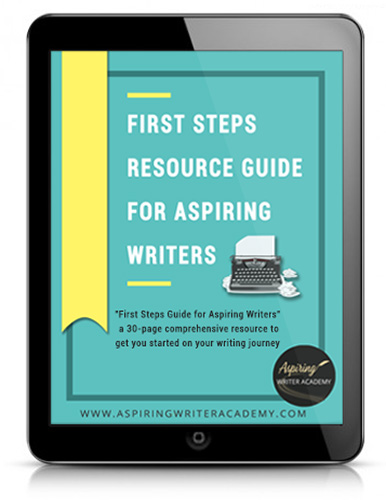
ENTER YOUR EMAIL
TO GET YOUR FREE
"First Steps Guide for Aspiring Writers" a 30-page comprehensive resource to get you started on your writing journey.
Other Blog Posts You May Like
3 Ways to Avoid Writing ‘Episodic’ Scenes in Fiction
Author Chats: Kate Breslin & Book Launch Promotion
Fiction Writing: Office Supplies to Help You Prepare to Write Your Next Novel
How to Write Act I: Opening Scenes for Your Fictional Story
Brainstorming Fiction: What to Do When Your Story Gets “Stuck”
Learn to Plot Fiction Writing Series: Story Analysis of “Beauty and the Beast”
How to Plot Your Fictional Novel (with Free Template Included)
How to Research a Setting for Your Fictional Novel
5 Questions to Create Believable Villains
Why Your Characters Need Story-Worthy Goals
3 Levels of Goal Setting for Fiction Writers
Fiction Writing: How to Write a Back Cover Blurb that Sells
How to Captivate Your Readers with Scene-Ending Hooks
Fiction Writing: How to Name Your Cast of Characters
Scene & Sequel: The Secret to Plotting an Epic Novel
Scene & Sequel: The Secret to Plotting an Epic Novel (Part 2)

is a multi-published author, speaker, and writing coach. She writes sweet contemporary, inspirational, and historical romance and loves teaching aspiring writers how to write quality fiction. Read her inspiring story of how she published her first book and launched a successful writing career.

